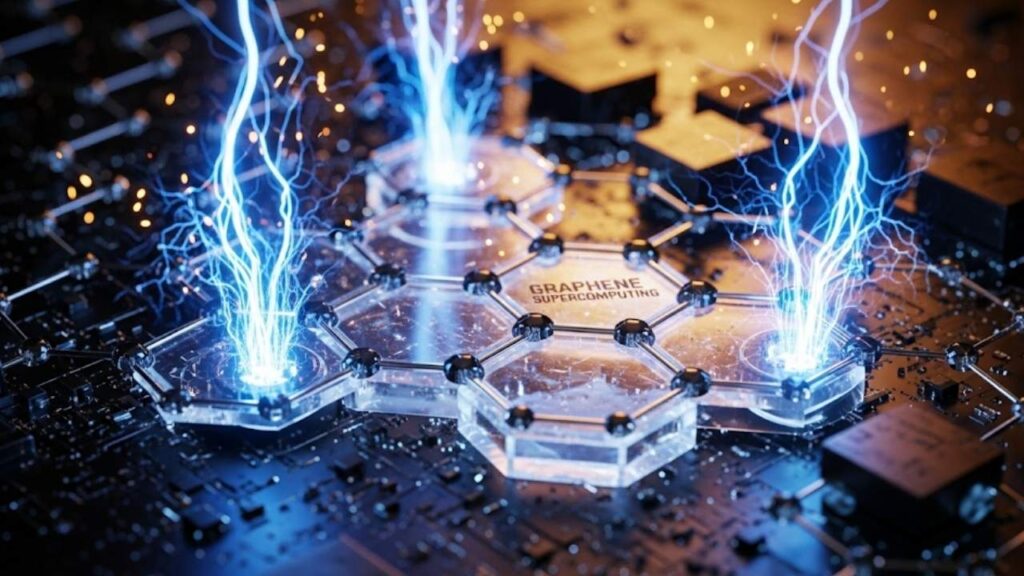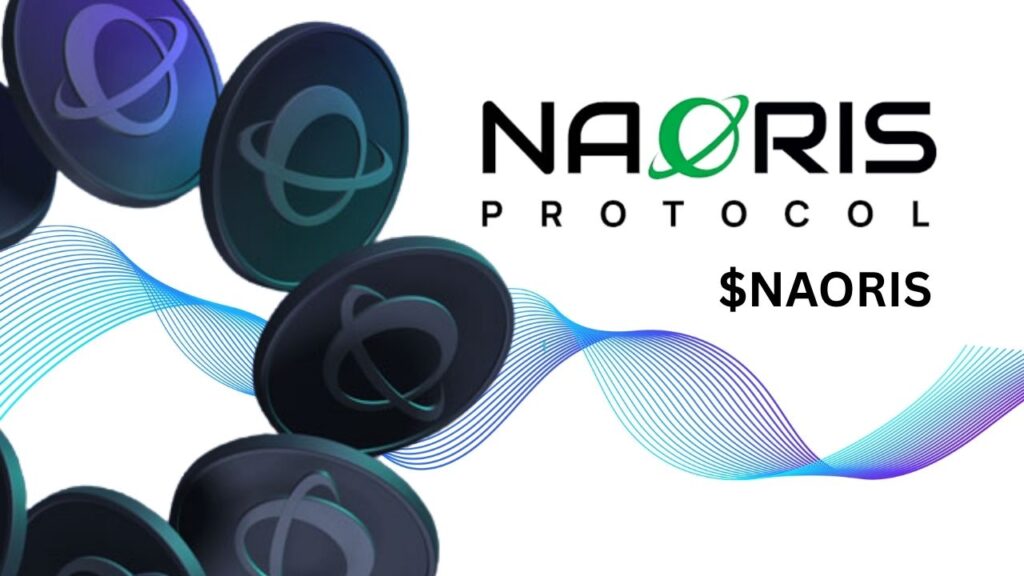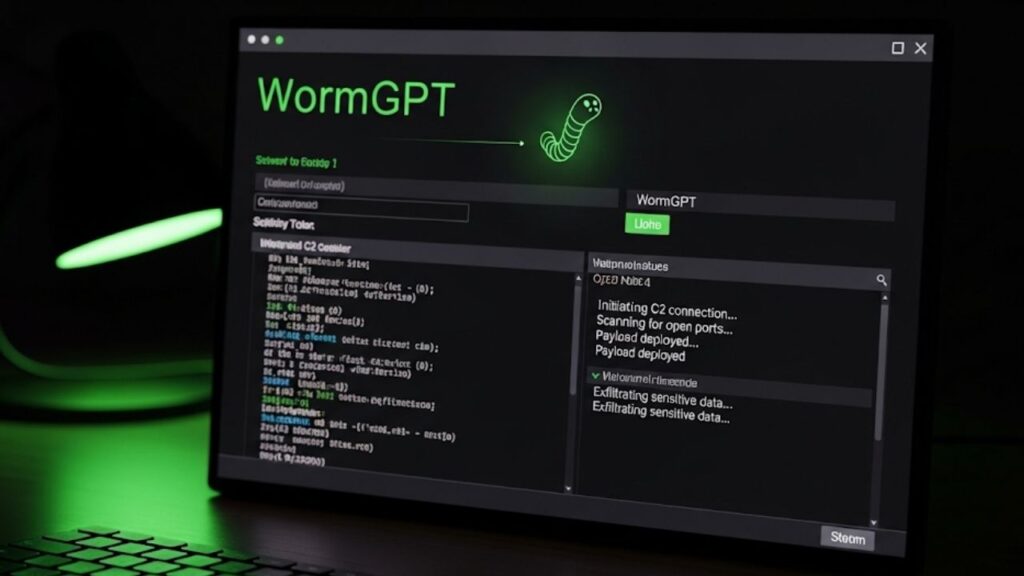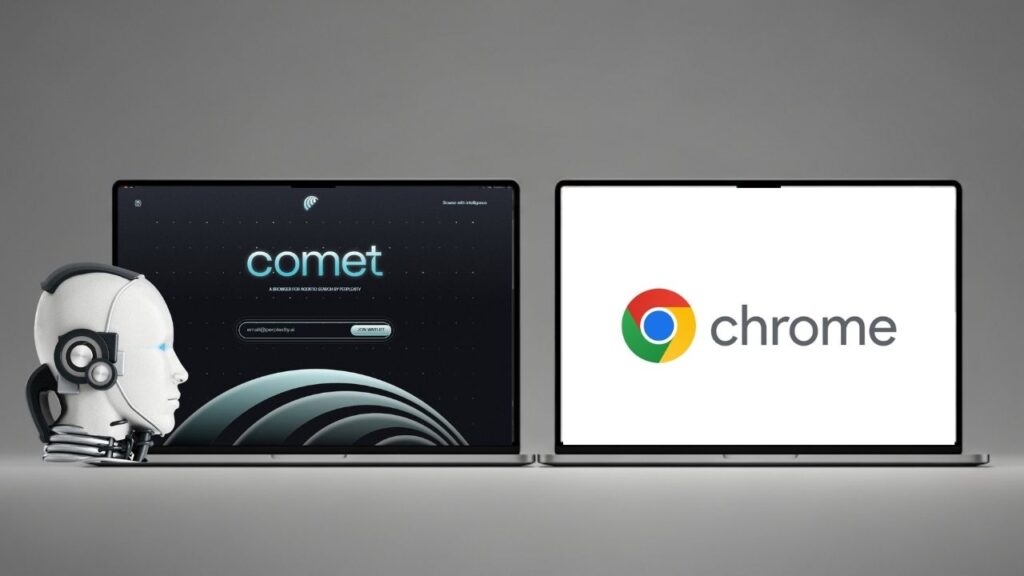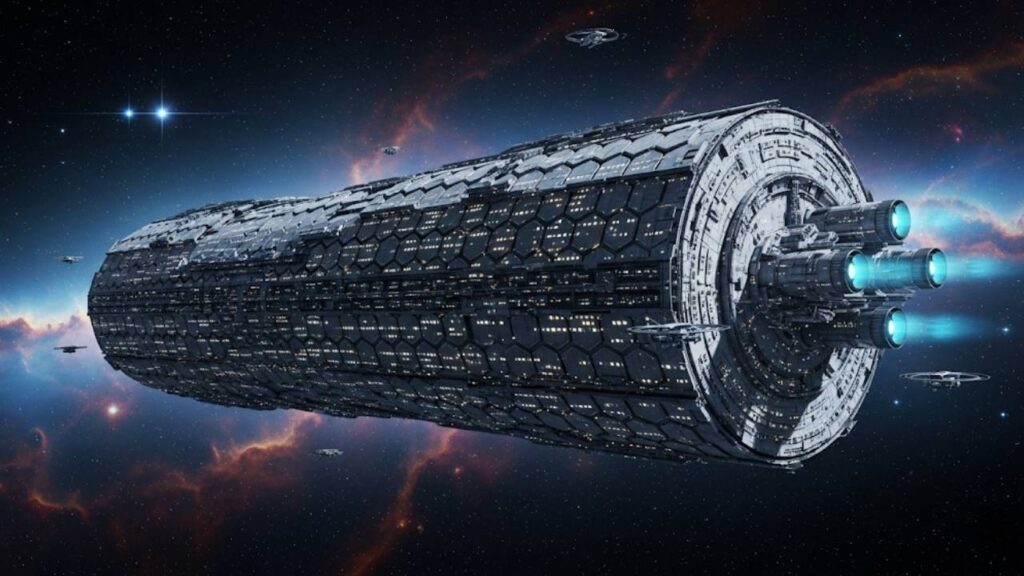Nvidia recently unveiled the Jetson AGX Thor, a groundbreaking $3,499 robotics AI computer dubbed the “robot brain.” This advanced chip is designed to significantly boost the capabilities of next-generation AI-powered robots and machines, with 7.5 times more AI computing performance than its predecessor, making it a giant leap forward for robotics and physical AI. Understanding Nvidia’s Jetson Thor is essential for anyone interested in the future of AI-driven robotics, autonomous machines, or intelligent systems powering industries like manufacturing, healthcare, and smart agriculture.
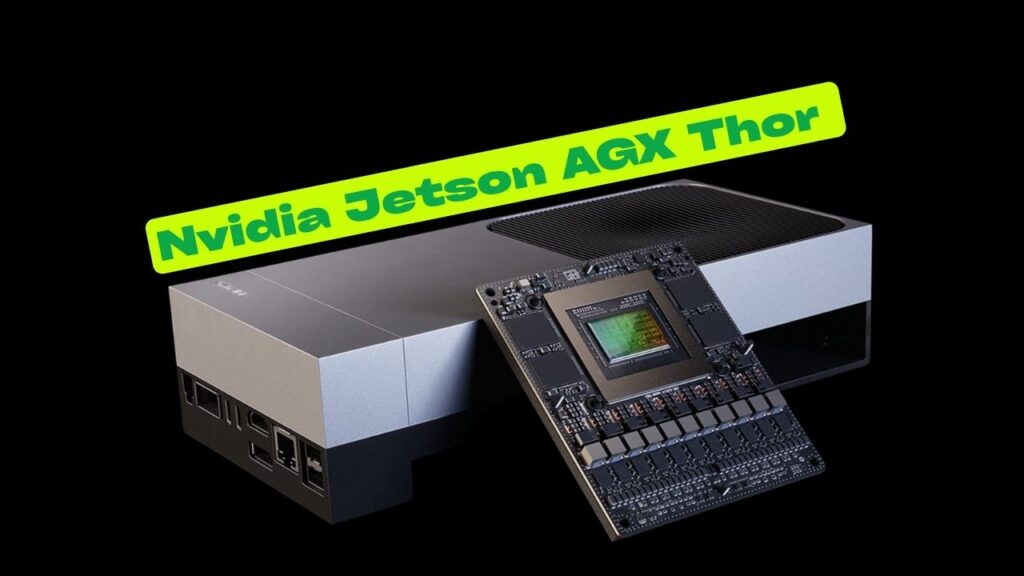
The Jetson AGX Thor is not just another AI chip; it is built to handle intense real-time reasoning, sensor fusion, and multitasking in complex environments. With large memory capacity and cutting-edge GPU and CPU technology, it promises smarter, quicker, and more autonomous robots. But what exactly makes Jetson Thor so special, and how might it affect the future of technology and career prospects?
Table of Contents
Nvidia Launches $3,499 Robot Brain
| Feature | Detail |
|---|---|
| Price | $3,499 for developer kit, $2,999+ for bulk orders |
| GPU Architecture | Nvidia Blackwell with 2560 CUDA cores, 96 5th Gen Tensor Cores |
| AI Performance | Up to 2070 TFLOPs FP4 (sparse) / 1035 TFLOPs FP8 (dense) |
| CPU | 14× Arm Neoverse V3AE cores, up to 2.6 GHz |
| Memory | 128 GB LPDDR5X at 4266 MHz |
| Power Consumption | Configurable from 75W to 130W |
| Key Use Cases | Humanoid robots, industrial automation, medical assistants, smart agriculture |
| Major Early Users | Boston Dynamics, Agility Robotics, Amazon, Meta |
| Official Website | Nvidia Jetson Thor |
Nvidia’s Jetson AGX Thor is a monumental step forward in robotic AI computing, offering unmatched power, efficiency, and integration for building the future of intelligent machines. Its ability to handle complex AI models in real time enables smarter, more autonomous robots in fields ranging from industry to healthcare.
For developers and professionals, investing time and skills in Jetson Thor and the Nvidia Jetson ecosystem opens doors to exciting career opportunities in robotics and AI. Whether building the next humanoid companion or a smart factory assistant, Jetson Thor’s cutting-edge technology will be at the core of this revolution.
What is the Nvidia Jetson AGX Thor?
The Jetson AGX Thor is an AI computer module that acts like the “brain” of a robot. Built on Nvidia’s new Blackwell GPU architecture, it dramatically improves the robot’s ability to process and understand information quickly and intelligently. With 128GB of high-speed memory, it allows robots to handle multiple sensors—like cameras, lidar, and radar—simultaneously and make fast decisions.
Compared to the previous Jetson AGX Orin, Jetson Thor provides:
- 7.5 times more AI performance
- 3.5 times better energy efficiency
- Up to 2070 trillion floating point operations per second (TFLOPs) of AI compute power
This means robots can perform more complex tasks like visual reasoning, natural language understanding, and sophisticated motion control in real time with low latency, which is critical for autonomous machines operating in unpredictable environments.
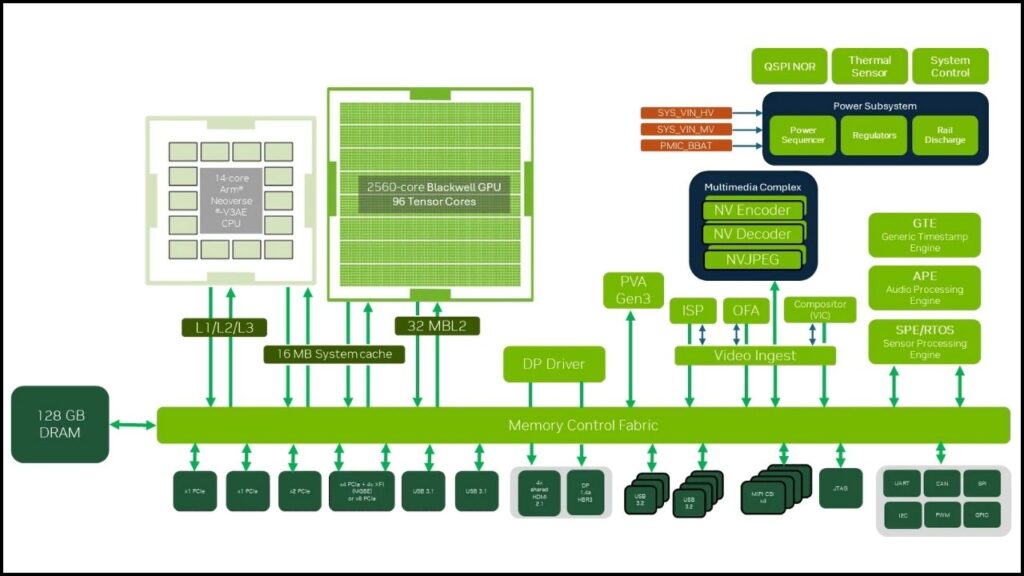
Key Components Explained Simply
GPU (Graphics Processing Unit)
The heart of the Jetson AGX Thor is its 2560 CUDA cores and 96 Tensor cores inside the Blackwell GPU. Think of it as a super-fast brain part that specializes in solving AI problems and handling graphics at lightning speed.
CPU (Central Processing Unit)
Along with the GPU, there are 14 advanced Arm cores that manage regular computing jobs and help the AI brain coordinate everything smoothly.
Memory and Data Bandwidth
The 128GB LPDDR5X memory running at 4266 MHz speed and bandwidth of 273 GB/s mean the robot can hold and process huge amounts of data quickly from its sensors or AI models, helping it react faster and more accurately.
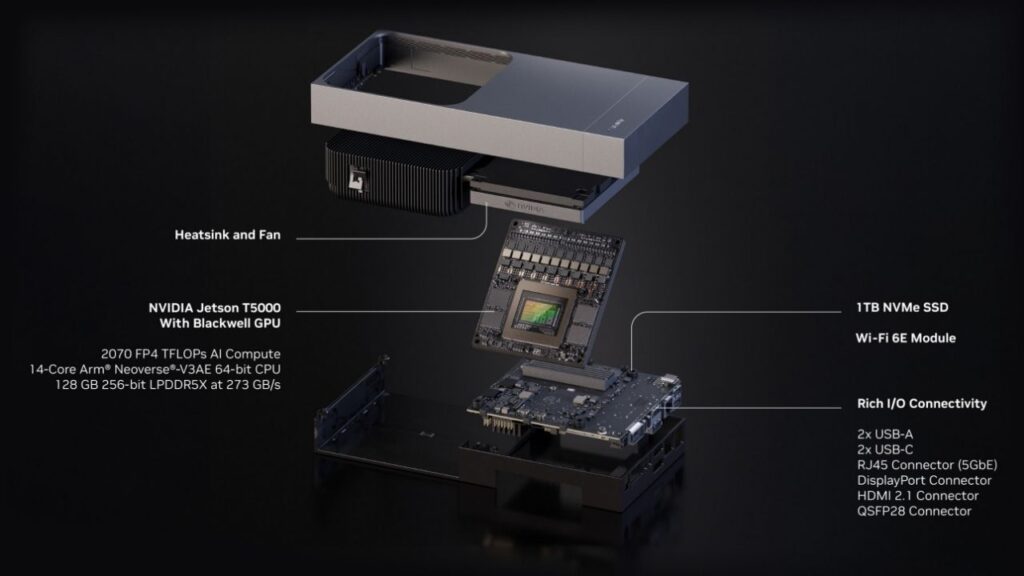
Power-efficient Design
Despite its power, the chip is designed to run between 75 to 130 watts, a carefully balanced range that enables use in powerful robots without wasting energy.
Practical Examples of Jetson Thor in Use
- Humanoid Robots: Robots that look and act like humans can use Jetson Thor to better understand speech, recognize faces, and make smart decisions, improving interaction with people.
- Industrial Automation: In manufacturing, these robots can perform complex assembly tasks, monitor quality, and intelligently navigate factory floors without human help.
- Medical Assistants: Surgical robots can benefit from Jetson’s rapid processing to assist doctors with precision and real-time data analysis.
- Smart Agriculture: Robots can monitor crops with multi-sensor AI to detect diseases, water needs, or pest presence autonomously.
Leading tech companies like Boston Dynamics, Agility Robotics, Amazon, Meta, and Caterpillar are already adopting this platform, signaling its critical role in the robotics industry’s future.
Why Jetson Thor Matters for AI and Robotics Careers
Nvidia’s Jetson AGX Thor launch highlights the fast-evolving robotics field, where the demand for AI engineers, robotics developers, and hardware integration specialists is soaring. As robots become smarter and more autonomous, professionals who understand platforms like Jetson Thor will be at the forefront of building the future.
Students, engineers, and tech entrepreneurs can expect new opportunities in:
- Developing AI models that run seamlessly on edge devices like Jetson Thor
- Integrating multi-sensor data for real-time applications
- Creating robots that learn and adapt in dynamic environments
- Enhancing performance of autonomous vehicles, drones, and robotic assistants
How to Get Started with Nvidia Jetson AGX Thor
If interested in exploring or working with the Jetson Thor platform, here’s a simple guide:
Step 1: Understand Your Robotics Goals
Define what kind of robot or smart machine you want to develop—whether it’s for industrial use, research, or consumer applications.
Step 2: Get the Developer Kit
Order the Jetson AGX Thor Developer Kit (priced at $3,499) from official Nvidia partners or distributors.
Step 3: Explore Nvidia Jetpack Software
Jetson Thor runs on Nvidia Jetpack, an integrated software suite combining a full Linux OS with AI tools and libraries optimized for Nvidia hardware. Download and start learning from Nvidia’s resources online.
Step 4: Develop and Optimize AI Models
Use frameworks like TensorFlow or PyTorch and optimize AI models with Nvidia’s TensorRT to run efficiently on Jetson Thor.
Step 5: Test with Real Sensors
Connect cameras, lidars, and other sensors. Use Nvidia’s sensor bridge technologies for low-latency data input.
Step 6: Deploy and Iterate
Deploy your robot in real-world settings, gather data, and keep optimizing your system.
Nvidia also partners with companies like RidgeRun to provide custom development services for Jetson Thor, making it easier for professionals to customize drivers, AI integration, and multimedia features.
OpenAI’s Latest Models Now Run Blazing Fast on NVIDIA RTX GPUs — No Cloud Needed
Huawei CloudMatrix 384: The AI Supercomputing Game-Changer Challenging Nvidia’s Dominance
Nvidia and Foxconn Want Humanoid Robots in Factories — The Future of Work Is Here
FAQs About Nvidia Launches $3,499 Robot Brain
Q1: What is the price of Nvidia Jetson AGX Thor?
A: The developer kit is priced at $3,499, with production modules costing around $2,999 for bulk orders.
Q2: How does Jetson Thor compare to Jetson Orin?
A: Jetson Thor provides 7.5× more AI performance and 3.5× better energy efficiency than Jetson Orin, with more memory and enhanced CPU/GPU tech.
Q3: What types of robots can I build with this?
A: Jetson Thor is ideal for humanoid robots, autonomous vehicles, industrial automation, surgical robots, and smart agricultural robots.
Q4: Does it support multiple sensors?
A: Yes, it supports up to 16 camera lanes and various other sensors with real-time fusion capabilities.
Q5: What software environment does it use?
A: It uses Nvidia Jetpack, which includes a Linux OS and AI development tools tailored for Jetson hardware.
